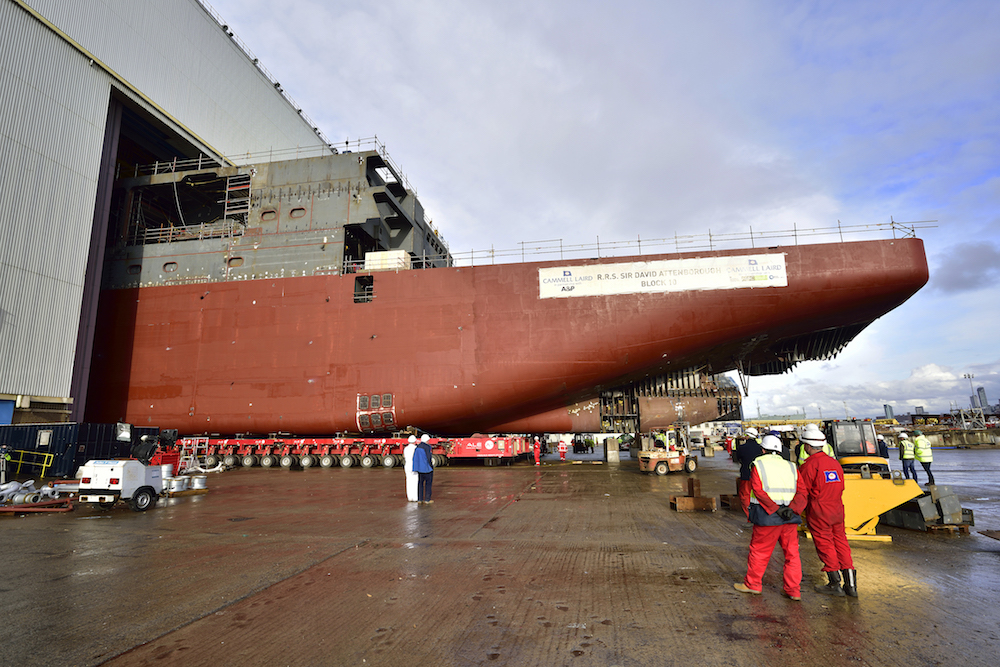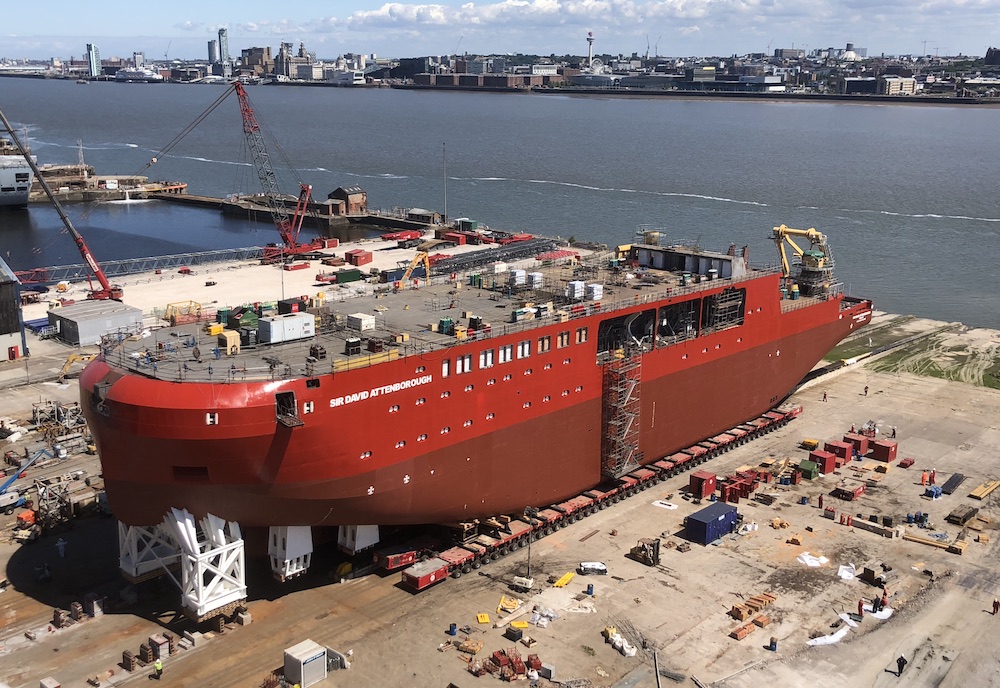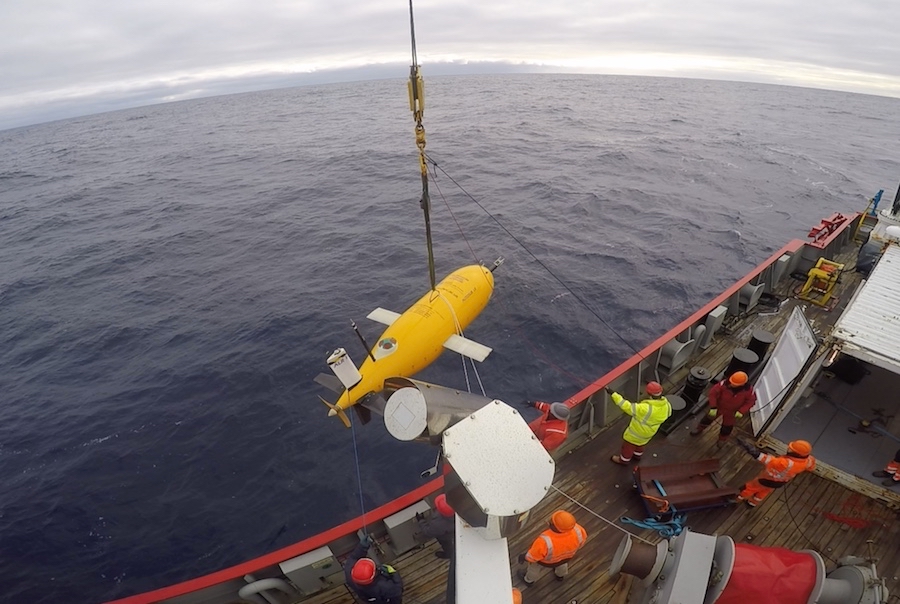The launch of a new British polar research vessel is hailed as a ‘milestone’
Serious science expected from ship already famous for the silly name that its owners (mostly) rejected.

Whether you call Britain’s next polar research vessel by the playful name selected by the public in an online poll in 2016, or the more serious-sounding one ultimately chosen by the British Antarctic Survey, the ship, according to its namesake, will be vital for climate research.
“Britain began exploring the Antarctic over a century ago when it seemed to be an empty wilderness of little importance to the world as a whole. Now we recognize that what happens at the poles is of the greatest importance to everyone, everywhere,” David Attenborough, a noted naturalist, said in connection with the launch near Liverpool, England.
Once completed, the RRS Sir David Attenborough will be one of the most technology-advanced polar-research vessels in the world. It will have room for a contingent of 60 scientists and include a range of scientific equipment, including unmanned aerial and submarine vehicles. The most noteworthy of which is an underwater drone named Boaty McBoatface (which was the name that received most votes during voting in 2016).

According to the British Antarctic Survey, which will own and operate the Attenborough, its construction underscores the UK’s effort to increase polar-infrastructure investment as it seeks to maintain its position as a leading polar-research nation.
Jane Francis, the survey’s director, called the launch a “milestone,” adding that the Attenborough and its research capacity represented a “transformation” in the support the British Antarctic Survey could give to polar scientists.
At 10,000 tons, the Attenborough is the largest civilian-use ship to be built in the U.K. in the past three decades. Built at a cost of £200 million ($260 million) in Liverpool, England, it is also the country’s largest investment in polar science since the 1980s.
The British Antarctic Survey currently operates two polar-research vessels, the RRS Ernest Shackleton and the RRS James Clark Ross, but both are expected to reach the end of their lifespan in the coming years.

The Attenborough will replace both by being able to operate year-round in ice as thick as 3 feet (1 meter) for periods of up to 60 days without needing to be resupplied.
After officially being named later this year, the Attenborough is due to enter service in 2019.